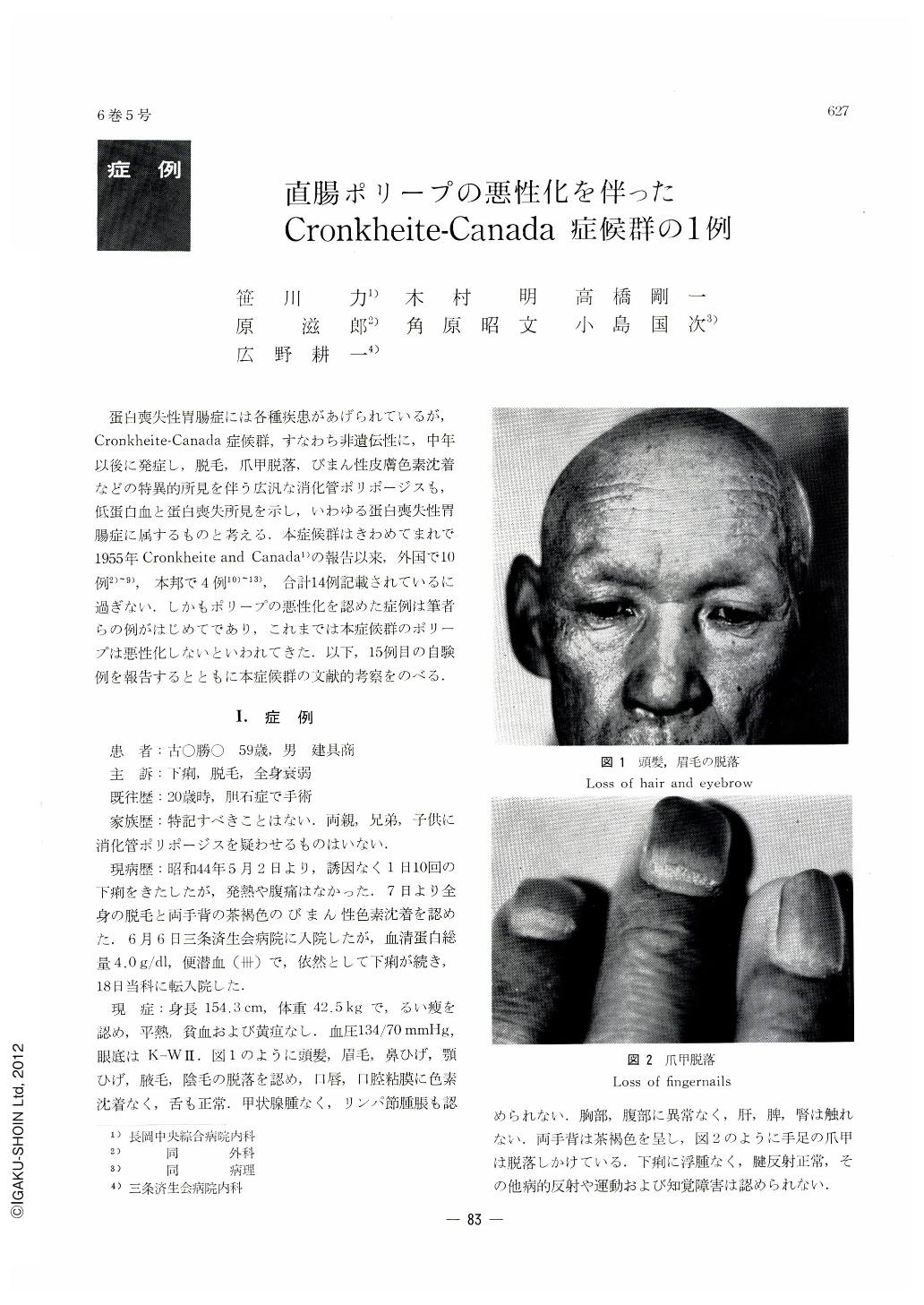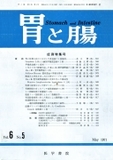Japanese
English
- 有料閲覧
- Abstract 文献概要
- 1ページ目 Look Inside
蛋白喪失性胃腸症には各種疾患があげられているが,Cronkheite-Canada症候群,すなわち非遺伝性に,中年以後に発症し,脱毛,爪甲脱落,びまん性皮膚色素沈着などの特異的所見を伴う広汎な消化管ポリポージスも,低蛋白血と蛋白喪失所見を示し,いわゆる蛋白喪失性胃腸症に属するものと考える.本症候群はきわめてまれで1955年Cronkheite and Canada1)の報告以来,外国で10例2)~9),本邦で4例10)~13),合計14例記載されているに過ぎない.しかもポリープの悪性化を認めた症例は筆者らの例がはじめてであり,これまでは本症候群のポリープは悪性化しないといわれてきた.以下,15例目の自験例を報告するとともに本症候群の文献的考察をのべる.
One case of Cronkheite-Canada's syndrome associated with malignant changes of rectal polyp, which was characterized by diffuse gastrointestinal polyposis with loss of hair, nail atrophy and skin pigmentation, is reported. The patient was a 59-year-old Japanese male, having diarrhea, emaciation, loss of hair (i.g. hair, mustache, beard, eyebrow, axillary and pubic hair), brown skin pigmentation of back of the hand and atrophy of all fingernails and toenails as initial symptoms. Total serum protein was 4.6g per 100 ml. The fecal excretion of 131Ⅰ-PVP in a succeeding 4-day period amounted to 6.0% of the injected close and the fecal RISA excretion in a succeeding 3-day period to 1.4% of the oral dose.
The x-ray and endoscopic examination showed diffuse polyposis in the stomach, colon and rectum. Malignant changes were partially noticed in a rectal polyp taken by biopsy. The patient died from ileus of terminal ileum after the total recto―colectomy. Cronkheite-Canada's syndrome is extremely rare, and only 14 cases, including the two reported originally by Cronkheite and Canada in 1955, have been described so far. Thus, the present case seems to be the fifteenth. Clinical and pathological data of those fifteen cases are reviewed as follows. Seven were male and eight were female. The age ranged from 31 to 75 years and the mean average was 59 years. There was nohereditary tendency and the onset was after middle-age. Initial symptom was diarrhea in most patients. Furthermore, hypoprote'nemia and protein-losing findings were always found, so that this syndrome should be considered as protein-losing gastroenteropathy. In some patients, hypocalcemia and hypopotassemia were observed and tetanic manifestation and muscular weakness occurred. Eight cases including this one died, and seven cases survived. The cause of death was cachexia and in two cases associated with malignant tumor of colon or rectum. To our knowledge, there is no report of definite malignant changes of rectal polyp except for this case. It was adenomatous polyp with proliferation, dilatationand hypersecretion of glands. The etiology of this syndrome is unknown.

Copyright © 1971, Igaku-Shoin Ltd. All rights reserved.


